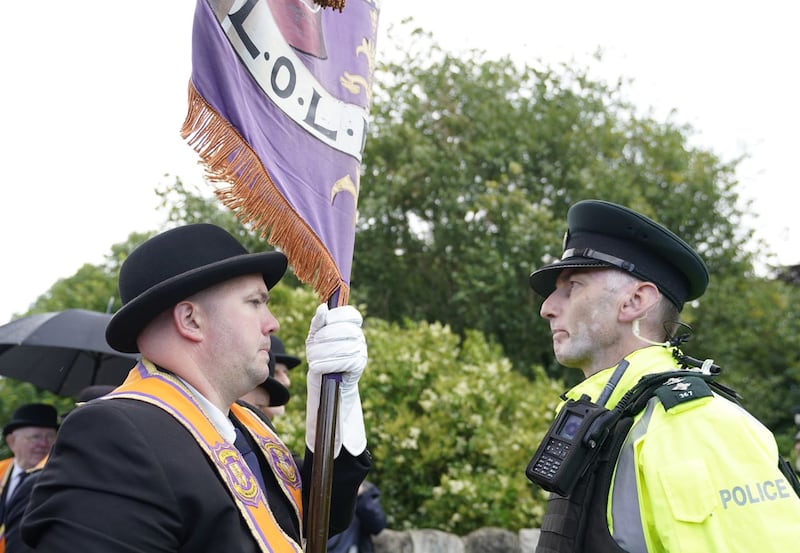When regulation of parades was being coaxed into existence three decades ago, it was considered fortunate that marching is fundamental to Orangeism.
That allowed parades to be distinguished from protests or demonstrations in general.
Clever Orangemen knew they should argue against regulation in terms of the rights to free expression and freedom of association, from which the right to protest is inferred.
But clever Orangemen were in short supply. The loyal orders ended up arguing their case in terms of a non-existent right to ‘walk the Queen’s highway’, earning justified ridicule.
To this day, 50 Orangemen could be dropped onto the Garvaghy Road by crane – or more realistically, they could assemble one by one, just as many protests assemble – and be completely beyond the remit of the Parades Commission, provided everyone remained on the spot.
There is not much the police could do about it either, as long the road was not blocked and no other laws were broken. This scenario has never arisen because marching is the point of the exercise.

However, one form of static demonstration did end up being regulated: parade-related protests are subject to exactly the same controls as parades, partly out of necessity and partly as a political compromise.
Organisers of such protests must notify the Parades Commission in advance, participants must observe the same code of conduct, the commission can impose any restrictions it “considers necessary”, and the secretary of state can order a ban.
No point of principle distinguishes this type of protest from any other. The law simply defines a parade-related protest as having opposition to the parade as one of its purposes.
While the protest must be at roughly the same time and place as the parade to have conditions attached, a ban can apply over any area for up to 28 days.
So the Rubicon has been crossed: Northern Ireland has had statutory regulation of protests since 1998.
Extending this more widely is a debate we should have had during the flag protests.
But the point of those protests was blocking the road, a criminal offence, so the PSNI sidetracked itself and everyone else by arguing it had to prioritise upholding human rights over enforcing the law – an argument it eventually lost in the Supreme Court.
We now have a fresh need and opportunity to consider regulation, due to protests against immigration and the war in Gaza.
Tensions on both issues have risen together across the UK and Ireland, which is no coincidence.

YouGov’s UK tracking poll shows concern about immigration had fallen to record lows last year, despite record numbers of people coming into the country, until Israel was attacked and protestors filled the streets.
Following an anti-war protest last Friday outside Queen’s University Belfast, which ended with scuffles between police and demonstrators, prominent figures in the rights sector took to social media to insist the right to protest is vital in Northern Ireland, given our history.
Maybe so, but our more recent history shows we can regulate protests, even under fraught circumstances, in a manner compliant with human rights law.
Free expression and freedom of association have always been qualified rights, allowing restrictions for public safety and the prevention of disorder or crime.
Under Northern Ireland’s parading legislation, parade-related protests can be banned or have conditions imposed to prevent disorder, property damage, disruption to the life of the community, negative impact on community relations and the placing of undue demands on the police.
Some protests over the past year have clearly crossed that threshold.
The commission’s code of conduct is essentially a requirement for basic civility, lowering the threshold for regulation considerably.
Among its stipulations is that protestors “avoid using words or behaviour which could reasonably be perceived as intentionally sectarian, provocative, threatening, abusive, insulting or lewd”.
Although the right to protest remains essential in a democracy, the past year has been a reminder that there are cranks who live to wave placards and cynics who live to exploit them.
Deciding who is being public-spirited and who is being a public nuisance is a difficult judgment, of course, which is why commissions are established to make that call.
Society’s problem with Orange parading was as much about persistent annoyance as occasional violence.
Both were legitimate reasons to tell a small group of people they did not have carte blanche to impose their irritating hobby on the rest of us.
Why confine our world-leading success in this field to only one type of protest?


